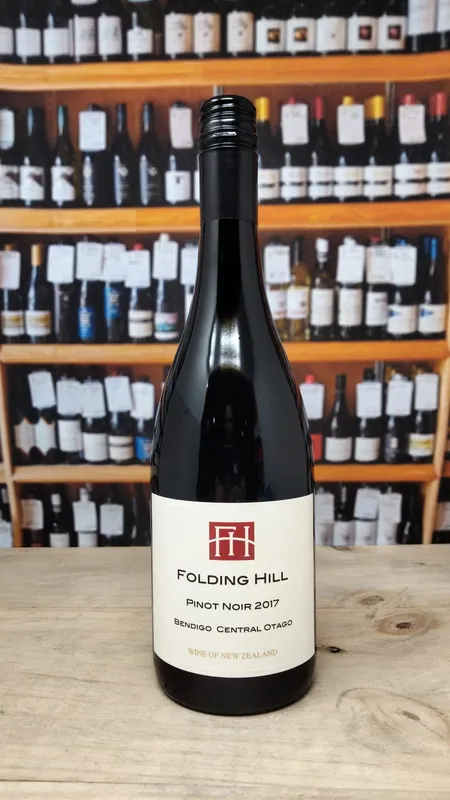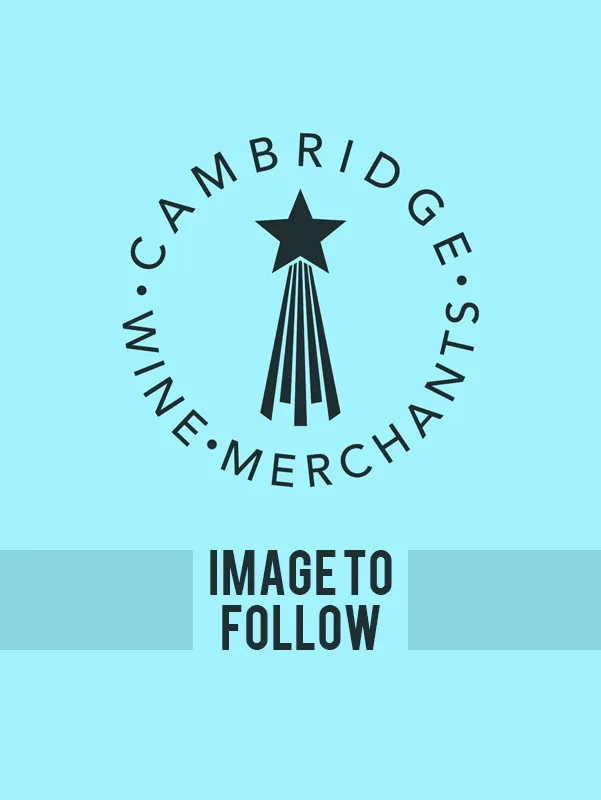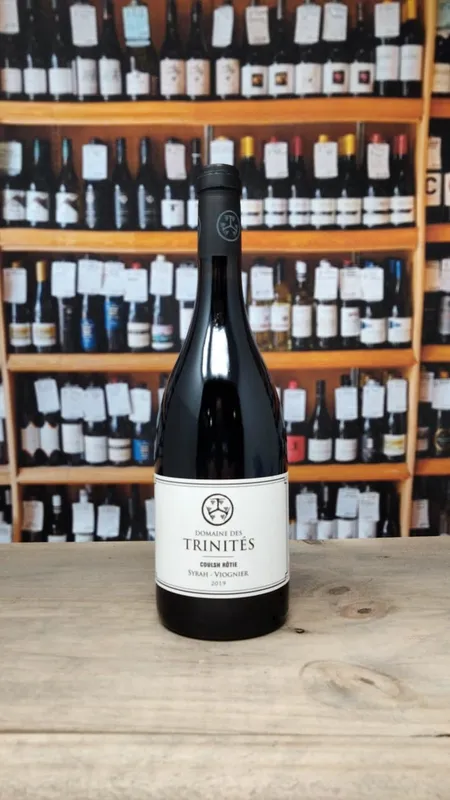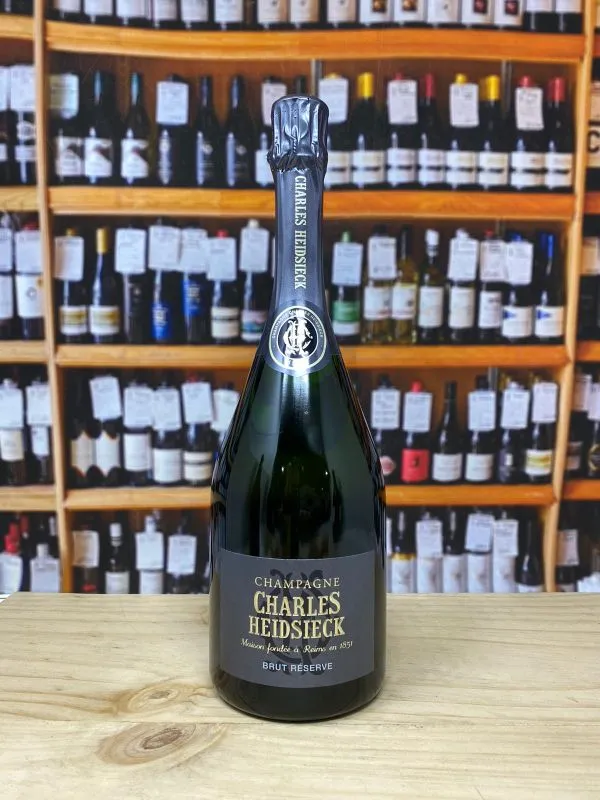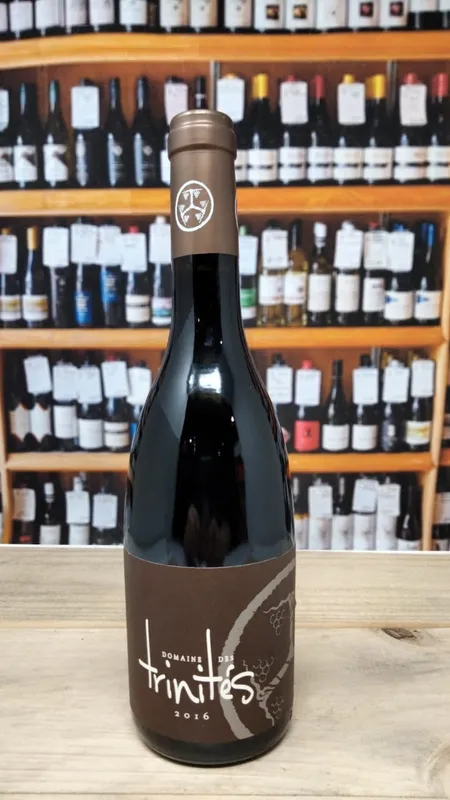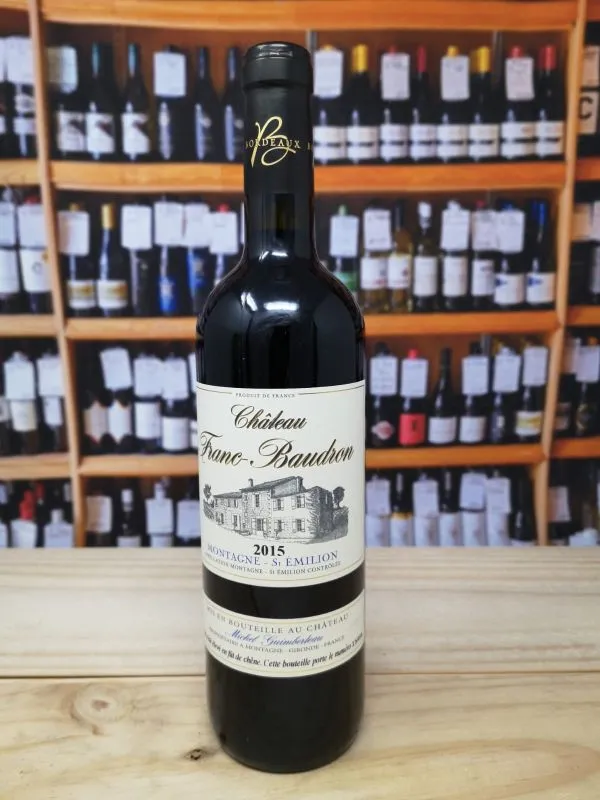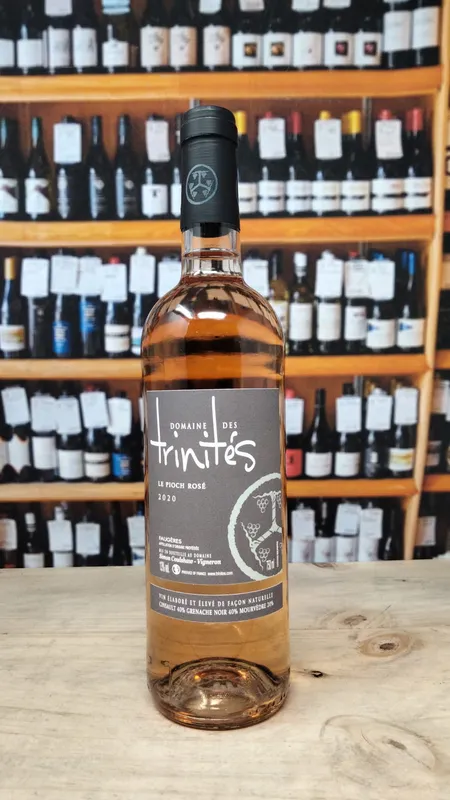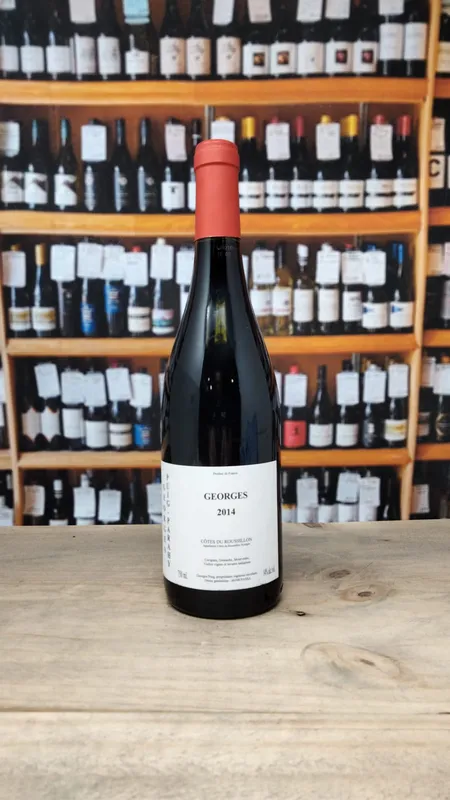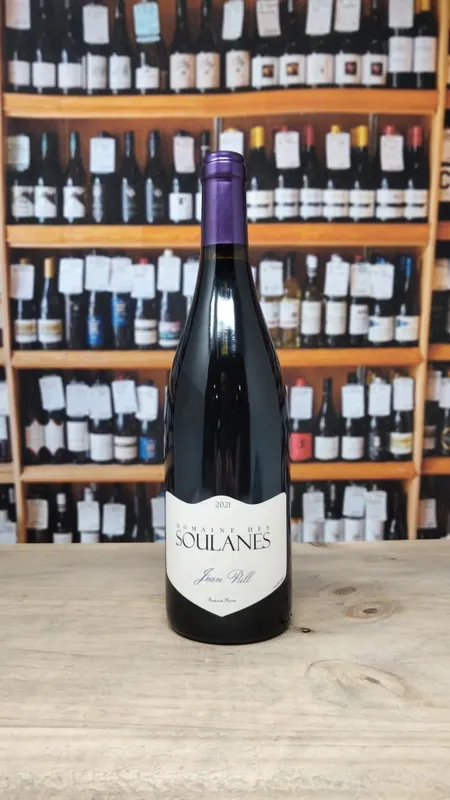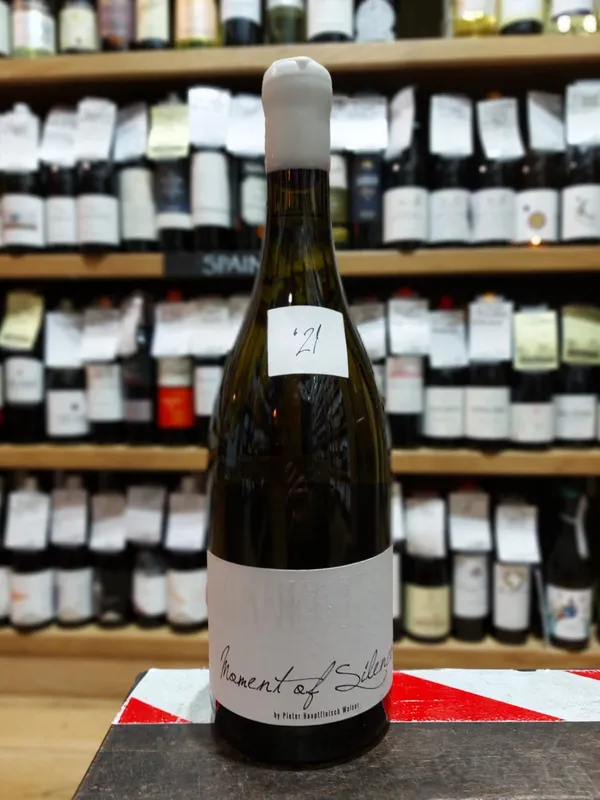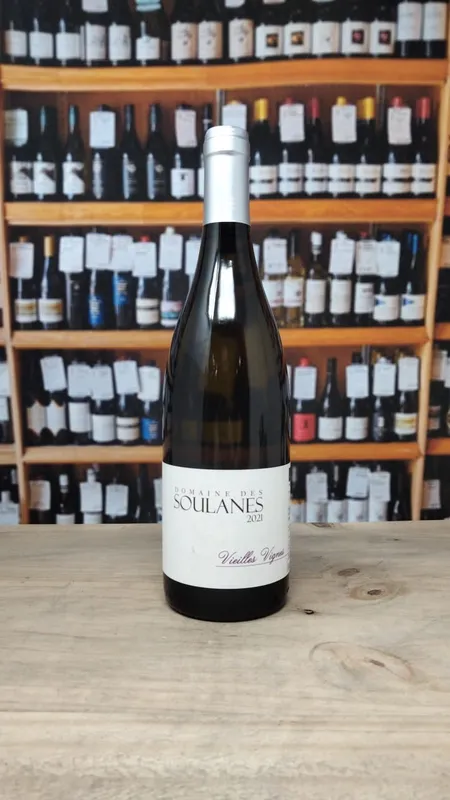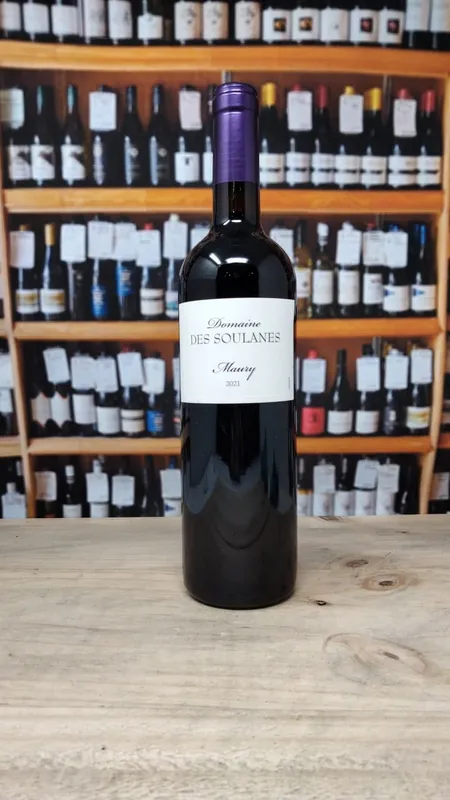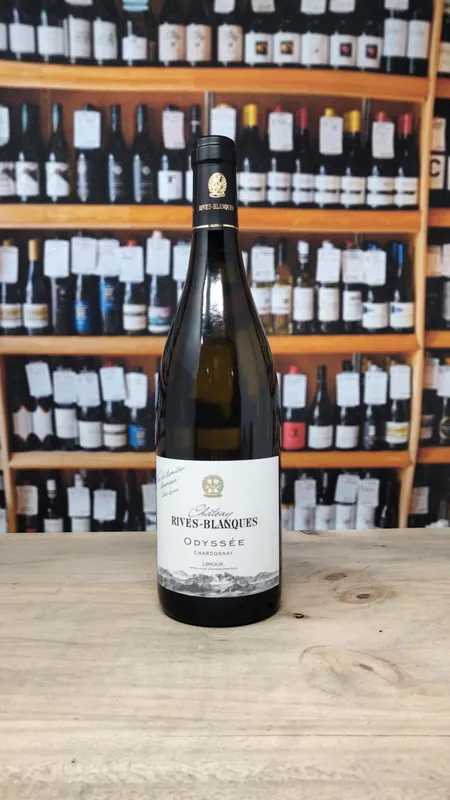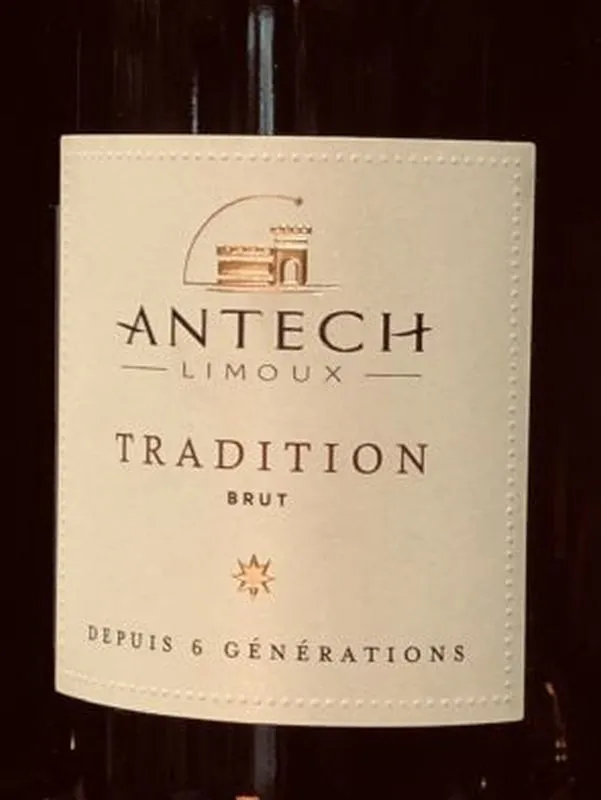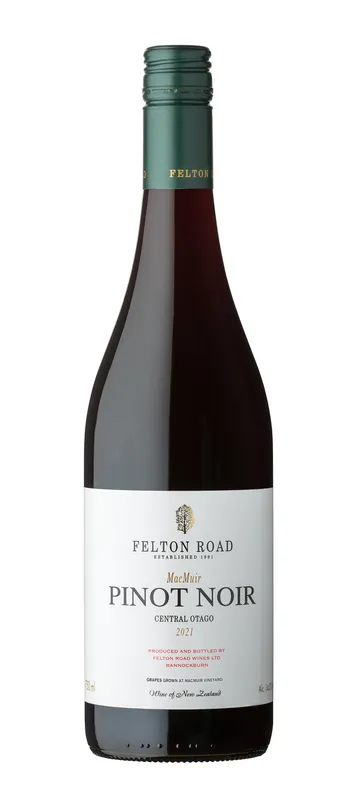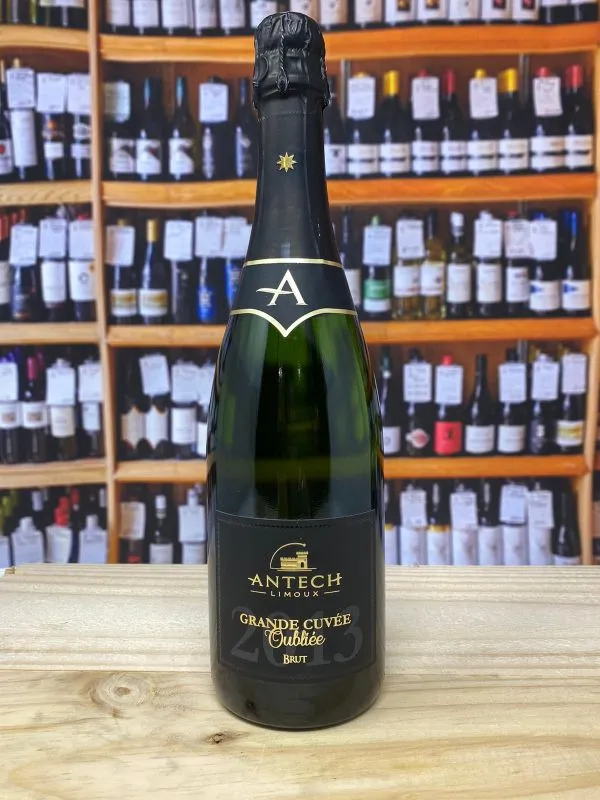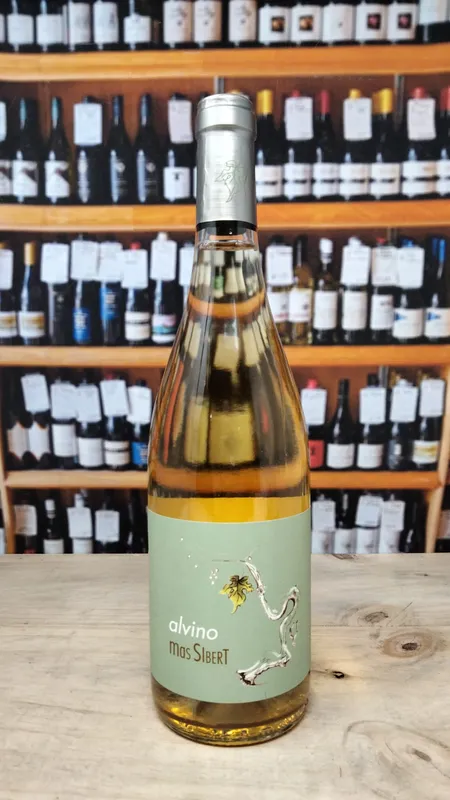Organic and Biodynamic
Whether Certified Organic, Biodynamic or farmed under a sustainable scheme these environmentally low impact wines are made with care for Mother Earth
There are 194 products in this category
80
610
20
Domaine des Soulanes
Mineral, taught. Fine and long. One of the unsung whites of the Roussillon. A blend of Grenache Gris, Grenache Blanc, Carignan Gris and Carignan Blanc. Outstanding wine. Ages gracefully for 10++ years. Beautiful vineyards that are beautifully worked.
80
565
10
Folding Hill
Deep coloured, the wine exhibits dark ripe fruit characters as well as truffle, spice and subtle toasted oak on the palate. A fulsome, structured and well rounded Pinot Noir with a soft acidity and generous mouthfeel
80
610
20
Domaine Danjou-Banessy
100% Carignan from 80 year old vines. Complex floral aromas. On the palate the fruits, such as raspberry and morello cherry, are crunchy and fresh. There is also a very strong stony/mineral feeling. The finish is long and pure. A vibrant wine.
80
475
90
Domaine des Trinités
It's here, the 'Coulsh-Rotie". Simon "The Coulsh'" Coulshaw's fabulous take on this iconic wine. "I put this glass of wine to my nose, and had I not been firmly anchored to a chair, would have taken five steps back. The aroma swept me off my feet. Indescribable. Wild. One Thousand and One Nights distilled into a glass. Heady and exotic and riddled with rose petals and spice and coiled with riddles and one sniff of this is poetry and myth and folklore and kitchen table and campfire and someone's cigarette stubbed out at 3 am in lonely finality. Garrigue-spiced aromatics spiral through rock, plant, seed, flower with dazzling complexity. One moment it's rose petals, so delicate you could brush a baby's lips with it; the next it's hot tar, underground angry, rocks shifting deep in the cracks of the earth. This is a velvety, cocoa-dusted, amped-up-then-restrained, dark-horse beauty. Vertical, dark, slub-silk fruit with overtones of tamari and dark chocolate, crushed coffee beans and sweet forest-floor earth. Long and the kind of wine that coils around you slowly, sinuously, sensuously. Worth every penny. You'd pay three times this for a Rhône of this stature". (TC) 18/20 jancisrobinson.com When to drink 2023 - 2035 Published on 29 Nov 2021 Date tasted 29 Nov 2021
80
235
26
Charles Heidsieck
Charles Heidsieck Blanc de Blancs is a pale, crystalline gold colour. The nose is characterised by aromas of mature Chardonnay; white peach, candied citrus with notes of lime, honeysuckle and fresh hazelnuts giving way to subtle hints of tangerine and lemon. On the palate, the Blanc de Blancs bears all the hallmarks of a Charles Heidsieck Champagne: boldness, generosity and elegance. Embracing yet light, it displays appealing mineral, slightly salty, iodine notes, and has a silky, creamy texture – unexpected from a Chardonnay – that leaves a lasting impression.
80
475
90
Domaine des Trinités
Beautifully resolved and brilliant Faugeres in a handy lunch time 50cl format. A dreamy bin-end offer. Snap it up!
80
195
32
Chateau Franc Baudron
The Guimberteau family has owned the Château Franc-Baudron estate since 1923. This is a vineyard on a human scale where each generation has left its footprint on the family heritage. Since 2010, the new generation of Château Franc-Baudron has embarked on an environmental approach by converting the entire vineyard to organic farming. The area hosts bee-hives, uses plants for treatments (horsetail, nettle and ferns) and seeds flowers to encourage biodiversity of wildlife in the vines. They have begun implementing new winemaking techniques by using minimal inputs to express at its best the nature of the grapes and the type of soil. Most of the family’s plots of Montagne Saint-Emilion are located on a clay-limestone plateau. Bright and intense in colour with aromas of blackcurrant, blackberry and oak notes.Well balanced, powerful and velvety.
80
475
90
Domaine des Trinités
Possibly the last Rosé to be produced at Trinités? The wine has always been produced for the home market, for the restaurants and bars, in all the major cities. But since the market for such in the last few years has dried up/been somewhat difficult, vigneron Simon Coulshaw has decided to take a break for a while. This 2020 is unlike any previous effort, mostly explained below in Tamlyn Currin's note for jancisrobinson.com. It really is truly wonderful Rosé with real minerality, precision and class. an absolute stunner. 40% Cinsault, 40% Grenache Noir, 20% Mourvèdre. Hand-picked, organically and biodynamically farmed grapes. 100% saignée ie no pressing, just bleeding from the tanks. Winemaker Simon Coulshaw points out that the distinct difference in colour between the 2019 and 2020 (the latter being distinctly lighter in colour) is purely down to the maturity of the anthocynanins in the grapes. In 2019 he left the grapes for an hour and the colour was already dark; in 2020 it spent three or four hours and still didn't throw much colour. Bone dry (less than 0.5 g RS). "This is an outstanding rosé. If only Languedoc producers would sit up and take notice – this is what you can do with rosé. Real wine. Real depth, real texture, acidity so full and exciting and ripe that it made me want to helter skelter, go boogie on Brighton Pier, lick seashells dipped in raspberry sherbet, make cherry bombs filled with lime sorbet and eat them sitting fully clothed in the sea with salt on my tongue and fingers and toes. All of which sounds like fun fun fun, but don't be deceived. This is a serious wine, framed in spice and pink-grapefruit-peel bitterness. Very Good Value (TC)". Score 17/20 jancisrobinson.com When to drink 2021 - 2023 Published on 29 Nov 2021 Date tasted 29 Nov 2021
80
610
10
Georges Puig - Domaine Puig Parahy
Established in 1446, Etienne Parahy is known as the first owner of the vineyards and the estate 'Puig Parahy'. In those near 600 years, the estate has passed through 19 generations to current owner and vigneron Georges Puig (the first son of each new generation is named 'Georges'). Nestled in Les Aspres region, a wonderful mixed-soil and fresh terroir of the Roussillon which is found between Mt. Canigou and the Mediterranean sea. The estate has a rich history producing outstanding rancio sweet wines that develop and live for decades, sometimes even centuries. Bottles from the 1800s are still available today. The estate was replanted in 1878 after phylloxera wiped out all of the vineyards. Many of these vines are still producing wonderful old vine fruit of outrageous quality that is carefully and naturally handled to produce a great range of dry table wines and VdNs of many styles. This is special wine. Ancient vines of Carignan, Grenache and Mourvedre and native, wild yeasts from this historic Roussillon estate have produced this pale, bright and gorgeous mid-red coloured wine - looking exactly like a current hipster favourite. The nose is alive with prickly bright fruits intermixed with beautiful secondary and tertiary aromas of old books, furniture and childhood memories of churches and other magnificent and curious things of wonder. The palate is equally as interesting and as equally sparkly bright and refreshing. But so rewarding, resolved and complex. An utter marvel from this unsung fresh terroir in the magnificent Roussillon.
80
610
10
Domaine des Soulanes
An absolute classic Roussillon 'house' blend from the master Daniel Laffite (the hardest working man with the hands to prove it!). The classic Soulanes recipe of richness, purity of beautiful fruit, freshness and seamlessness. Delicious and underpriced. This wine never lets you down.
80
610
10
Domaine des Schistes
Grown on rocky schist soils in the commune of Estagel. West to north-west exposure. The vineyard is called 'Poux Baly'. A beautiful, bright blend of Vermentino 38%, Grenache Gris 34% and Maccabeu 28% that is utterly delicious and versatile. Medium weight with a fine, fresh length. Harvested at night into small crates and made very naturally and fermented in steel vats, with only one small addition of sulphites before bottling. Malolactic fermentation is blocked to keep the bright freshness.
80
715
38
Vilarnau
A superb off-dry Prosecco alternative produced exclusively for the UK market by Eva Plazas, the ever dynamic winemaker at Vilarnau Cava. Produced from a blend of indigenous grape varieties, Macabeo, Parellada and Subirat Parent, aromatic primary fruits on the nose lead to a palate with excellent balance between acidity and sweetness. Using the highly aromatic and rare Subirat Parent grape as part of the dosage (15g/l) is inspired.
80
610
20
Domaine des Soulanes
A very special wine from ancient plants of two of the rarest and very best vines for Soualnes terroir, Grenache Gris and Carignan Gris. This really does have everything. It's floral, honeyed orchard and citrus fruits added to its sumptuousness, its layers of texture and bright but not too spiky acidity. Very long with great balance and so much interest. Divine stuff that is here in tiny quantities.
80
295
28
Dom. des Soulanes
Outstanding. Floral, herbal and gorgeous bright red and black fruit on the nose, The palate is divine with it's exquisite purity and balance. Great at the table with both savoury and sweet dishes.
80
455
26
La Vigna si San Martino di Argiano
Outstanding Chianti Classico Riserva from the cooler north west of Chianti. Grown on soils very similar to Felsina's vineyards in Berardenga, this cooler terroir in Argiano helps produce a wine of great energy, elegance and inherent harmony. La Vigna di San Martino ad Argiano is the personal project of Giampaolo Chiettini. Giampaolo spent a good number of years working alongside Paolo di Marchi at Isole e Olena where he fell deeply in love with Sangiovese and honed his skills and became a very highly regarded winemaker of the region. Antinori and Ca' del Bosco have also used Giampaolo's services over the years. He still consults and makes wine for the outstanding Castagnoli and brilliant newcomers Ejamu amongst others. This personal project comes from a beautiful, tiny (1ha!) vineyard in Argiano in the San Casciano Val di Pesa commune. Organic Sangiovese grapes are destemmed and gently crushed then undergo wild fermentation with natural yeasts. The wine is bred in used tonneaux. Giampaolo's trained, light hand in the cellar has helped produce a really rather wonderful Chianti Classico Riserva. This 2020 knocked us out. Immense energy and focus to the wonderful fruit and character. Only 2,000 bottles produced. This wine proves utterly marvellous drinking now, but shall age gracefully and beautifully for many years. We can't wait to follow the evolution! This Chianti Classico Riserva 2020 was one of only four wines to scoop the top score of 17.5/20 from Walter Speller on jancisrobinson.com in the "Chianti Classico Riserva 2020" section of his full report on the 2019 and 2020 vintages published earlier in 2023. Our Senior Buyer, Stewart Travers, had met and tasted with Giampaolo the month before the reports were published and similarly benchmarked the wine and then realised we were on to something very exciting indeed. Make sure you get on the allocation list early! And also make sure you grab a bottle of his immense Vin Santo 2017, here in tiny quantities!
80
705
90
Ibizkus
Ibizkus Wine, founded in 2007, has now established itself as one of the finest wineries on the island of Ibiza. They produce wine from nearly half the island’s registered vineyards, all originally planted for auto-consumption, of which the vast majority is the black grape, Monastrell. Seen as one of the founding and iconic grapes of Ibiza’s long winemaking past, Ibizkus use it to produce fine reds and flagship rose. About 40% of its production is dedicated to national and export markets, and to promoting its fabulous wines, quality and winemaking potential of this famous Balearic Island across Europe. The Can Basso Blanco is made from a blend of approximately 75% Malvasía Ibicenca and 25% aromatic Malvasía (known as “Malvasía de Sitges”) planted in Ibiza in the mid-1990s, the wine is fermented and aged in second-use, 700-liter French-oak barrels with 7 months stirring on lees. An elegant, creamy and expressive wine with notes of white-stone fruit and citrus, a lovely saline quality and plenty of body and structure.
80
705
90
Ibizkus
Ibizkus Wine, founded in 2007, has now established itself as one of the finest wineries on the island of Ibiza. They produce wine from nearly half the island’s registered vineyards, all originally planted for auto-consumption, of which the vast majority is the black grape, Monastrell. Seen as one of the founding and iconic grapes of Ibiza’s long winemaking past, Ibizkus use it to produce fine reds and flagship rose. About 40% of its production is dedicated to national and export markets, and to promoting its fabulous wines, quality and winemaking potential of this famous Balearic Island across Europe. The grapes are destemmed, inoculated with indigenous starter yeasts and fermented in concrete then aged in second and third use 500 l. French oak barrels for 5 months. The Can Basso Tinto is an brilliant, intriguing wine with savoury, smoky aromatics and a touch of florality reminiscent of Nebbiolo. Full-bodied but not heavy, with lots of dark black fruits and spice, with a wonderful earthiness and well-defined but soft (surprising for Monastrell) tannins.
80
475
90
Chateau Rives-Blanques
This domaine's showpiece wine is made using the best Chardonnay grapes, fermented and matured in French oak. Burgundian and silky in style, "Lemon zest and lemon juice to the fore here, a bright, zesty expression, with pear and apple too, lightly on its feet....it has lovely freshness". Natalie Earl, Decanter Magazine From jancisrobinson.com Certified organic. From four plots of 26 to 46-year old vines grown amongst oak trees at 350m and on rolled pebbles and limestone. Hand-picked and hand-sorted, low-pressure pressing, free-run juice only. Malolactic fermentation is in 225-litre oak barrels, which is where the wines are aged. Gentle lees stirring for the first four months. Unfined. Château Rive-Blanques now belongs to Pierre Bories’ Artisans & Partisans group of estates. "Rich, nutty (even a little caramelised) and streaked with fresh garrigue. As with their Dédicace Chenin, the acidity feels softer and more muted than I’ve come to expect with R-B wines, but there is a firm hazelnut and walnut framework around the fruit, so the texture and structure is there. Touch of liquorice on the finish gives it a nice twist". 16.5/20
80
610
20
Domaine Danjou-Banessy
100% Cinsault from 130+ year old vines. Extraordinary wine.
80
715
30
Antech
Sixth generation Francoise Antech has taken this excellent producer to even greater heights, championing the Limoux region and Mauzac grape variety around the globe. The UK is the family's largest market , now looked after by seventh generation Baptiste. This is the first priced wine in a range of their Blanquettes and Cremants that we recommend. Blanquette de Limoux has a claim to being one of the world's oldest sparkling wines, with legend dating its creation to 1531.
80
565
10
Felton Road
Intense nose of real concentration. Vibrant and jewelly – like essence of Central Otago but with a drier finish than many. Still very youthful and savoury. Great stuff! 2020 Vintage Jancis Robinson MW
80
475
90
Mas Sibert
70 % Sangiovese, 30% Syrah, is amongst the very best in the Languedoc. Intense color, pretty aromas of white flowers. With a nice roundness with a touch of juicy residual sugar that really works in this 20th harvest celebration wine. So much sheer joy and fun here. Emotional stuff.
80
715
30
Antech
A blend of Chardonnay, Chenin Blanc and Mauzac. Traditional method. Exclusively hand-picked with immediate pneumatic pressing. Initial fermentation takes place in thermo-regulated stainless steel vats. After assemblage a second fermentaion takes place in bottle. The wines are 'forgotten' in the cellars for 5 years. Then this Grande Cuvée is finally revealed - showing incredible freshness and great delicacy. The wine is dosed at only 5g/l. Coming in at 12% alc. The wine is rich and complex with a beautiful golden colour with fine and very delicate bubbles. Rich caramel tones interwoven with crystalised fruit with fine vanilla and a whiff of gingerbread on the nose. The palate is delightfully youthful with accompanying citrus notes with orange oil and zest. A remarkable and truly special Cremant de Limoux. A special sparkling wine.
80
475
90
Mas Sibert
Alvino is made from a curious mix of Albarino, Petite Arvine, Viognier. After a short maceration on skins, the wines is aged in amphoras for 6 months. Quite a rich, round wine, but with nice acidity on the long attractive finish.


